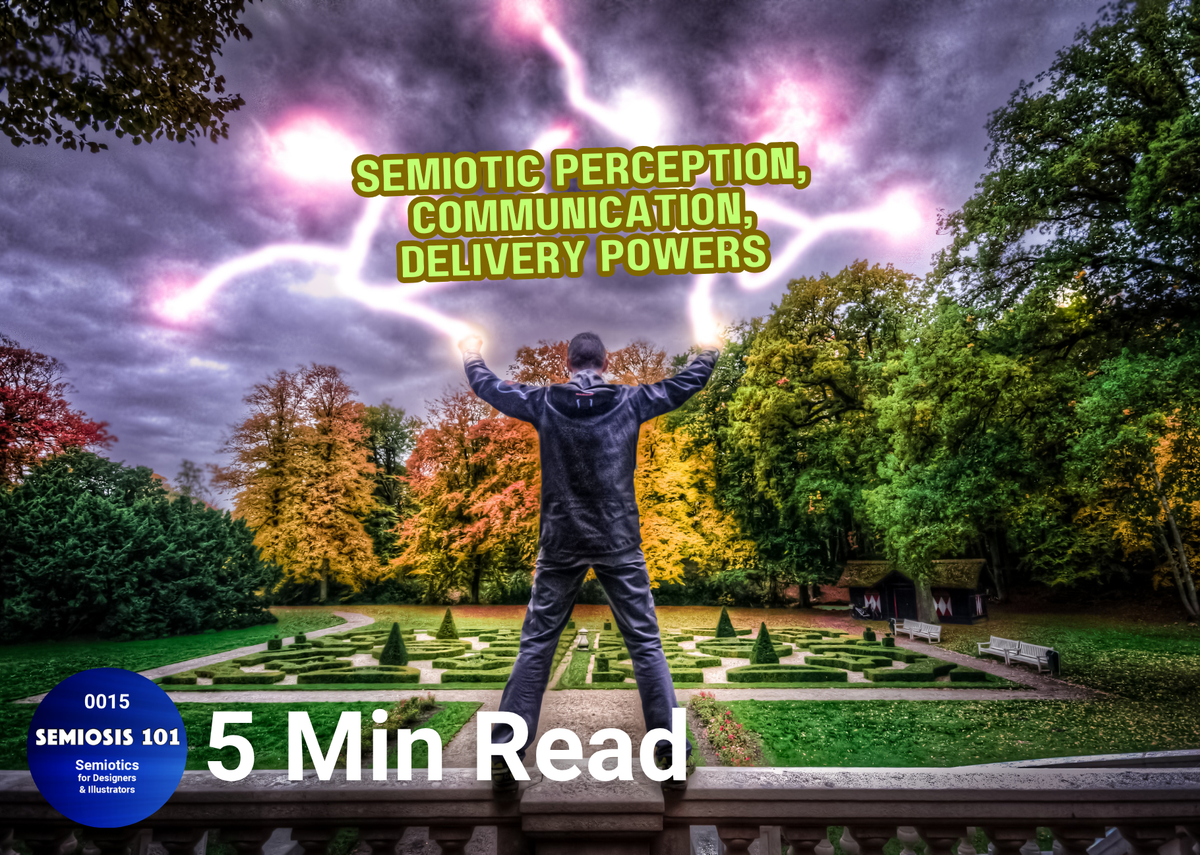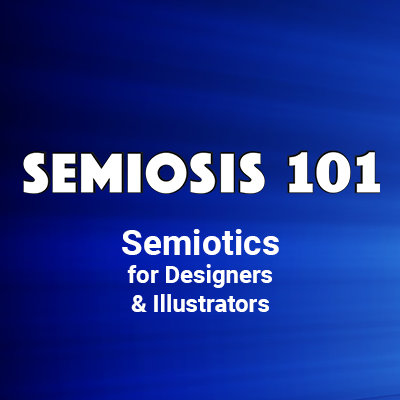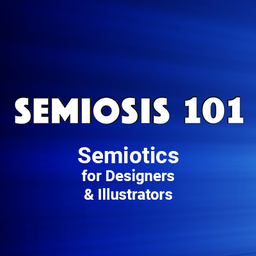BLOG 15: Semiotic Perception, Communication, Delivery Powers

Semiosis 101 - 5 minute semiotic read
The underlying structure of Peirce’s pragmatic semiotic theory is based on sets of threes, interacting with each other. Understanding this triadic structure will help you designer’s and illustrators to understand Semiosis’ power. The first major triad is in the semiotic determination flow from what you represent, to how that is interpreted.
The ultimate goal being and interpretation of the intended concept being visually communicated through the visual language you use in your illustration or design. This determination flow between a concept, its representation and interpretation is crucial to successfully visually communicate.
Semiosis provides you will additional power levels which you can manipulate to ensure your visual language decisions visually communicate what you
intend. Peirce calls these power levels trichotomies. It is easier to explain these as semiotic Perception Power, Communication Power and Delivery Power. Peirce’s theory is systematically structured on a triadic basis. The inter-relationships between threes is crucial to understanding how Semiosis functions. Peirce defines a rude provisional division of how these relationships separate themselves. He divides these relationships into ones of Comparison, Performance and Thought.[1]
His triadic relations for Comparison are of the “nature of logical possibilities” in a state of Firstness. Those of Performance are “of the nature of actual facts” in a state of Secondness.” The final triadic relations of Thought are “of the nature of laws” in a state of Thirdness. The lowest triadic relationships are comparisons of instant familiar possibilities. From this level, facts can be suggested through mediation to existent known things. Finally, with facts known, these can be resolved and agreed as proxies for another thing.
Each of the three key areas of Semiosis - concept, representation and interpretation - are structured in this triadic way. The determination flow between them is ‘powered’ by the levels of Comparison, Performance and Thought in each semiotic sign.
If I equate this to a gearbox in a car, then for your aesthetic to visually communicate to the audience, its semiotic transmission happens through the visual language used. To visually communicate effectively, your meaning-bearing visual elements in your aesthetic (semiotic signs) mesh together to determine what the level of mediation of meaning is transmitted to the audience.
Just as a gearbox has different sized gears which interconnect to raise or lower an engine’s power, the concept, how that is represented and how its interpretation is mediated relies on the levels of Comparison, Performance and Thought. Peirce defines this shifting of ‘semiotic gears’ as trichotomies.
His Object (our concept) is a trichotomy of Iconic (familiar), Indexical (existent) and Symbolic (proxy for) representation levels for Communication.
His Representamen (our representation) is a trichotomy of Qualisigns (instant), Sinsigns (mediated) and Legisigns (agreed) levels of semiotic Delivery.
His Interpretant (our interpretation) is a trichotomy of Rheme (possible), Dicent (suggested) and Argument (resolved) levels of audience Perception.
For your audience to perceive meaning in your design or illustration, Semiosis provides you with three levels of Perception Power to help your aesthetic visually communicate e.g. the semiotic mediation of possible meaning, suggested meaning, or resolved meaning. Likewise, to visually communicate what you intend, Semiosis has three levels of Communication Power.
Semiotic sign-action can visually mediate meaning using comparisons of familiarity or point to factual existent things. Then the visual element can be thought of as a proxy for the intended concept.
By the various ‘meshing’ of these semiotic ‘gears’ visual communication can be delivered across three levels. The Delivery Power is semiotically either instantaneous (weak delivery), mediated (from the possibly familiar to the suggested existent) before it can be socio-culturally agreed that in this visual context, what the aesthetic is connotatively visually communicating is this other thing.
Pragmatic semiotic sign-action strengthens how you enrich deeper and richer meaning in your illustrations or designs. The lowest semiotic levels depend on Comparisons, then Facts, before Thoughts can turn to what is connoted. There is more on this in my 2026 Semiotics for Designers and Illustrators book, and in many Semiosis 101 episodes on YouTube and Patreon.
[1] The Peirce Edition Project. Eds. (1998) The Essential Peirce, Volume 2: Selected Philosophical Writings (1893–1913). Bloomington: Indiana University Press, p289.





